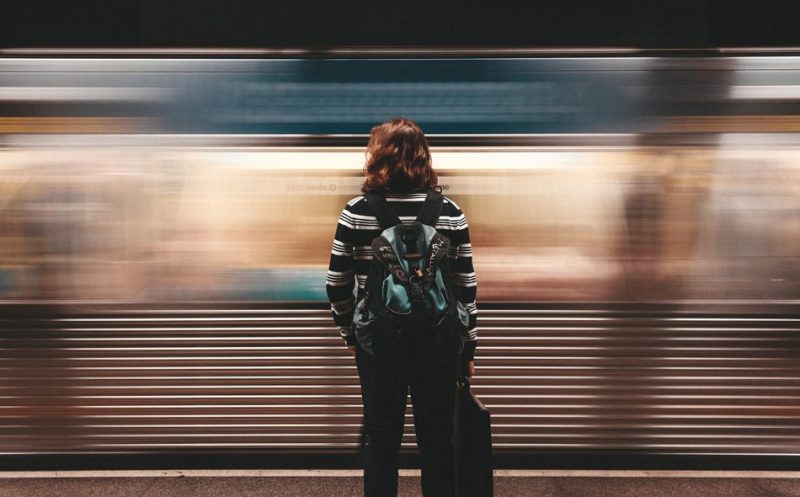The Sao Paulo Metro stations are huge; if you are mulling taking the rapid transit network in Brazil, be prepared to walk a lot inside the stations. They are massive, undoubtedly clean, and very well-organized, which is quite surprising by subway standards anywhere in the world. The stations are manned by policemen at every bend to assist you with any problems that you may face with the metro services.
Metro rides in Sao Paulo are quite reasonable. Signages inside the station are written both in English and Portuguese. Commuters also change lines to take more than one train to reach their destination. Sao Paulo metro trains run both underground and above the ground.
The metro maps function as guides and are easy to navigate. On a normal working day, the metro stations in Sao Paulo are brimming with people.
Sturdy, sliding emergency gates connect the metro doors; there are barriers too behind the yellow line which indicate the travelers to maintain distance while waiting for the arrival of the train. The doors are also policed at regular intervals, and this speaks volumes about adherence to the highest standards of safety and security for the convenience of the commuters.
The train interiors are exceptionally clean and tastefully done. There are five lines in Sao Paulo’s metro system: Blue, Red, Yellow, Green, and Lilac.
The Blue Line connects the northern and southern parts of Sao Paulo. The popular stations are Estação da Luz (Luz Train Station), Estação da Sé, Paraíso, São Bento (Monastery, Municipal Market) and Portuguesa-Tietê ( terminal Tietê, sambódromo Anhembi). The Red Lineconnects the eastern and western regions. The most popular stations on the line are Republica, Estação da Sé (São Paulo Cathedral), and Palmeiras-Barra Funda (Memorial da America Latina).
The most popular stations on the Green Line are Vila Madalena (Beco do Batman), Consolação (Avenida Paulista), Paraíso, Trianon-Masp, and Clínicas (Museu do Futebol). On the Yellow Line, the popular stations include Estação da Luz (Luz Train Station), República, Pinheiros and Paulista. This was the first line in the city to use driverless technology. The Lilac Line is the newest and shortest line, which connects the Southern area of Santo Amaro to the extreme Southwestern neighborhood of Capão Redondo.
If you have travelled on one of the trains recently and have lost or misplaced an item, here are three ways to get help.
1. Approach the Lost and Found Office

Do not worry if you have just left behind an item or multiple ones on a Sao Paulo train. You may consider taking help from the police guards who are stationed at every point inside a metro station, or you may walk directly to the Lost and Found Office at the address below to register a missing item complaint.
Sao Paulo Metro Lost and Found Office
Sé Station, Praça da Sé
Sé, São Paulo
SP, 01310-200, Brazil
Opening hours: Monday to Friday 7:00 am to 8:00 pm
They will enter the information into their system and generate a case number for you to keep track of updates. All communication happens via email and calls.
You may even visit their website for more details. You can access the web form online to submit a lost item report.
2. Dial the Customer Support Helpline

Reach out to Sao Paulo metro’s customer service to troubleshoot your problem. You can call 0800-7707722 for assistance. Let them know important information like the date you took the ride, the arrival and destination stations, if there were any transfers midway, the line you took, items lost, and whatever else they would require to trace your items.
Leave them your email ID and phone number so that they can keep you updated through calls or text messages.
3. Use Social Media Platforms

Try getting in touch with a reliable source on their social media pages and send out an SOS through the instant chatting system. Rest assured, someone will call you shortly to discuss your issue and forward the same to the concerned department, and your complaint will be processed for action. Check out the following links for quick reference — Facebook, Twitter and Instagram.

